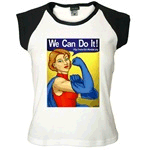![]() Avengers Academy is possibly the best book Marvel is currently publishing. Written by Christos Gage and drawn by a number of fantastic artists (including Mike McKone, Sean Chen, Tom Raney, and soon Tom Grummett), Avengers Academy tells the tale of 6 new teenage superhumans who share a history of capture and torture at the hands of H.A.M.M.E.R. director Norman Osborn. In the wake of Norman Osborn’s fall from grace, these troubled teens (Veil, Striker, Mettle, Finesse, Hazmat, and Reptil) have been taken under the Avengers’ wing to become the inaugural class of Avengers Academy. But, as the kids very quickly discover, they weren’t chosen because they have the best potential to become heroes – they were chosen because the Avengers fear that, without guidance, they might turn into villains.
Avengers Academy is possibly the best book Marvel is currently publishing. Written by Christos Gage and drawn by a number of fantastic artists (including Mike McKone, Sean Chen, Tom Raney, and soon Tom Grummett), Avengers Academy tells the tale of 6 new teenage superhumans who share a history of capture and torture at the hands of H.A.M.M.E.R. director Norman Osborn. In the wake of Norman Osborn’s fall from grace, these troubled teens (Veil, Striker, Mettle, Finesse, Hazmat, and Reptil) have been taken under the Avengers’ wing to become the inaugural class of Avengers Academy. But, as the kids very quickly discover, they weren’t chosen because they have the best potential to become heroes – they were chosen because the Avengers fear that, without guidance, they might turn into villains.
What separates this book from the dozens of other teen superhero books that have passed through comic shop shelves over the years? The answer is Christos Gage, a writer who has rapidly risen to become one of Marvel’s brightest stars. Gage’s work deals with consequences at a level that few other superhero writers are willing to tackle. No canon, no matter how old, is irrelevant for Gage. He expertly weaves the past and the present (without, it should be noted, relying on fans’ assumed knowledge of past stories) to illustrate the ways that past experiences and actions shape the lives and futures of all human beings. The Avengers Academy faculty includes characters like Hank Pym and Pietro Maximoff, characters who have made their fair share of mistakes and want to pass along the lessons they’ve learned to the next generation. The lives of superheroes are difficult and messy, and this book addresses that fact with a rare honesty.
Yet the book is far from glum and gloomy. Ultimately Avengers Academy is a story of hope, of adults trying to help kids and kids trying to help themselves and each other. The kids have their problems, but they’re still very much kids – they even have a prom! – and their interpersonal relationships are bright spots amid the stresses of battle. They have successes to match their failures, and the book is frequently quite funny. I rarely finish an issue without a smile on my face.
For those whose interest has been piqued, I highly recommend picking up all the trade paperbacks of the series so far. But for those looking to dip their toes in, the book’s recent status quo change – moving the school to the old West Coast Avengers headquarters and adding new characters – is a perfect jumping-on point. Pick up last month’s issue 21 and see what the fuss is all about.
Violence: This is a superhero comic, so there’s plenty of fighting of all kinds, including violence that ends in death (though not for our protagonists). Given the premise, all of the characters also have some kind of torture in their backstories. But violence in this book is rarely graphic or gory.
Sexualized Violence: There are references to the past sexualized attack on faculty member Tigra (which happened in another book) and one of the male characters is implied to have been molested as a child. Sexualized violence is never graphic or cast in a positive light, however. 
Gender: Half of the original team was female, and more recently two more regular female students have been added, in addition to a number of part-time students (including former solo title stars Spider-Girl, the Savage She-Hulk, and X-23). The girls come from a variety of backgrounds and have distinct personalities, and gendered plots and dialogue are extremely rare. The girls are both as heroic and as screwed-up as their male counterparts.
The Bechdel-Wallace Test: Since the gender-balanced cast spends most of its conversations talking to each other about their powers, fights, and education, I doubt any issue has failed to pass the test, though I don’t have specific figures.
Minorities: From its inception, this book has made a conscious attempt to include diversity in its cast. Reptil is Latino, Hazmat is half-white/half-Japanese-American, and Mettle in flashbacks appears to be at least half Native Hawaiian (he’s also half-Jewish). The new cast includes a white queer character (Julie Power) and a Puerto Rican female character (the new White Tiger, taking up the mantle from wholesale jeans, Hector Ayala), and recent writer comments have hinted that one of the original team may be gay. The teaching staff, relying as it does on older characters, is totally white and straight (and mostly male), but that could change at any point as the cast shifts. In addition, the new part-time students come from a variety of backgrounds.
Parents May Wish to Be Aware: I would rate this book at least PG-13; it is definitely aimed at teens and adults, and the level of violence and implied sexuality is probably too high for younger kids. But compared to some superhero comics, this book tends to be less graphic and grim-and-gritty; the costumes and art are not sexualized and there is a strong moral center to the story. Teenagers should be fine.
Review by Jennifer Margret Smith